The 8 Best Power Meters to Gather All Your Training Data
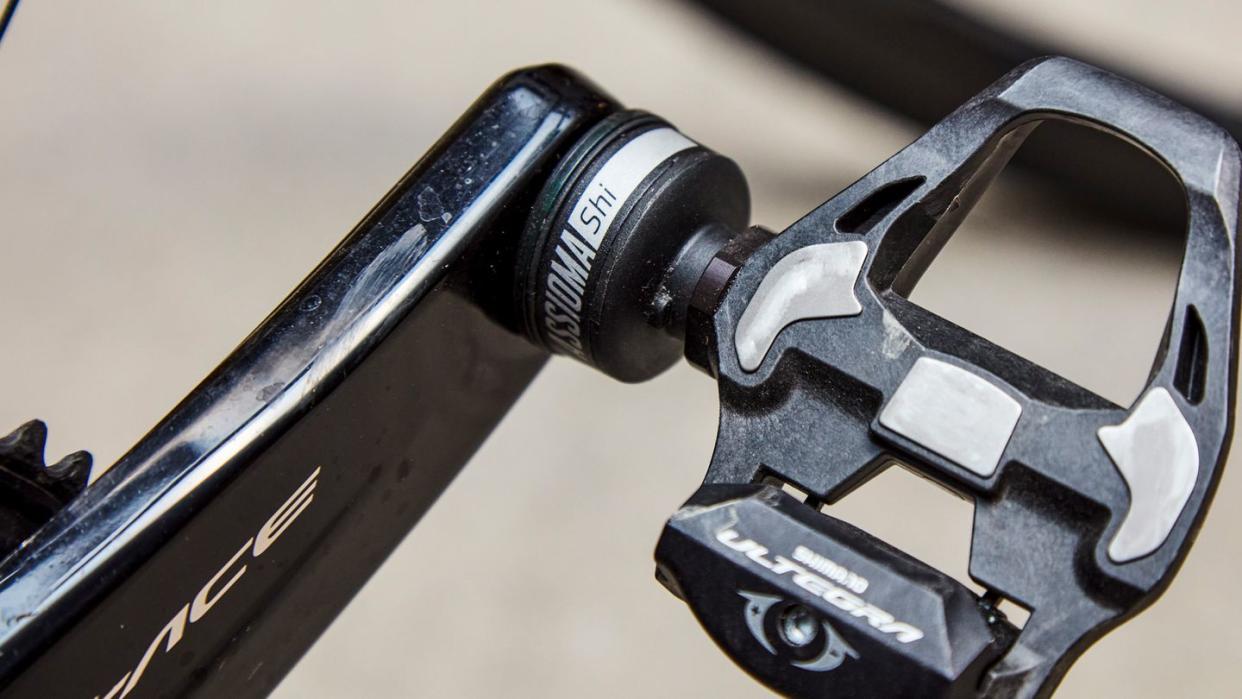
"Hearst Magazines and Yahoo may earn commission or revenue on some items through these links."
A power meter is an essential training tool for high-level cyclists who want to optimize their training regimen based on their performance. It provides all the training data you need, based on a functional threshold power (FTP) test, which measures your average pedaling power.
Unlike heart rate monitors and fitness trackers, power meters measure your output, rather than your heart’s response to that output. Both types of data are useful, but experts and professional cyclists consider power meters to be a more accurate assessment of performance, as the data isn’t affected by external factors like caffeine consumption (which will impact your heart rate), or the specifics of your route on a given day.
If you’ve spent time hanging out with other riders at coffee shops or post-ride bar stops, you’ve probably found yourself in a conversation about watts and power. (Cyclists, in general, seem to love this kind of stuff.) Whether you’re interested in finding out how to tailor your own training and riding with the use of a power meter, or are simply ready for an upgrade, we can help you find the best power meter to take your training to the next level.
The Best Power Meters
Best Overall: Garmin Rally Pedal-Based Power Meter
Best Value: 4iiii Precision 3.0 Power Meter
Best Pedals: Favero Assioma Duo Road Pedals
Best Pedals for SPD Cleats: SRM Origin Road Carbon Power Meter
Best Pedals for Speedplay Cleats: Wahoo Powerlink Zero Dual-sided road pedals
Best Crankset: Quarq DFour DUB Road Power Meter Crankset
Best for Pros: Rotor 2INpower SL
Best Customizable Crank: Power2Max NG Road Power Meter
The Expert: I’m a New York City-based cyclist who uses my bike as my primary mode of transportation (I’m not even sure how much the subway costs these days). I’ve been writing about cycling gear and adventure travel for 15 years at publications like Dirt Rag Magazine, Adventure Cycling, BBC Travel, Popular Science, Fodors, Popular Mechanics, Bicycling, and many others.
I’m also involved in (and part of) both the vast recreational and huge competitive racing cycling communities in the New York Tri-State Area (and beyond). I ride road, gravel/dirt, and off-road including, most recently, sketchy mountain bike “trails” in Madagascar. While I don’t race anymore, I love a good spreadsheet, and still enjoy analyzing power data month-to-month and year-to-year.
How Power Meters Work
Power meters measure your cycling power using a set of sensors called “strain gauges,” which measure the effects of external forces by detecting the minuscule bending or flexing of the metal or carbon of a particular object. When you ride, your pedaling is the external force, and the object is whatever spot on the bike where you place the meter, such as a pedal, crank arm, spider, or spindle. These measurements go through some internal computing and calibration to calculate how much power you’re putting out while propelling your bike forward, measured in watts (W). Mathematically, cycling power is equal to torque (how hard you’re pushing the pedals) multiplied by cadence (how fast the pedals are turning or revolutions per minute).
In order to see, review, and analyze all this data, a power meter needs to be paired with a cycling computer or smartphone app via ANT+ or Bluetooth. Make sure to plan out a workflow for extracting and parsing your data, or you may find yourself struggling to use it.
What to Consider in a Power Meter
Finding a power meter that suits your specific needs and budget may require a bit of research. They can attach to different parts of your bike, and many are compatible with specific types of parts and accessories. Before you buy, let’s walk through the essential aspects of a power meter.
Types of Power Meters
Power meters come in different forms, depending on where and how they attach to your bike. Often, they come installed inside the pedals. You will also find versions that position strain gauges in the crankset or the spider, where chainrings connect to the crank arm. In some cases, like most Shimano cranksets, the crank and the spider are attached, which prevents you from using a power meter designed to attach to the spider.
Choosing a pedal- or crankset-based design will not automatically have a material impact on your power meter’s accuracy, so the distinctions between them come down to secondary factors. Power meters with crankset gauges tend to have a little more staying power, though, as your bike’s frame protects them from external damage. Pedal-based meters, while more exposed, are easier to transfer from one bike to another.
Dual- or Single-Sided?
Regardless of position, power meters come in two styles— single-sided or dual-sided. Single-sided power meters use one set of strain gauges to measure the power output of one leg, then estimate your total power output of the other. Dual-sided meters use two sets of gauges to independently track the output of each leg.
As you might expect, choosing a single- or dual-sided power meter often comes down to balancing price and performance. While technically less accurate, single-sided power meters are more affordable, and provide a decent snapshot that should serve a weekend recreational cyclist well.
Dual-sided power meters will provide you with more precise data, as it can accurately measure the power output of each leg. Most cyclists have an asymmetry in their pedal stroke that fluctuates depending on how tired they are or how hard they’re pushing: Tracking each leg can help you chart those changes. The extra specificity can also be useful if you’re doing interval or threshold training. (There are some high-end single-sided power meters that can estimate left/right balance, though that data isn’t as accurate as what you get from a true dual-sided model.)
Personally, I need a dual-sided power meter. I have a slight meniscus tear and chronic patellofemoral pain syndrome in my left knee, which causes substantial power asymmetry. Having data that shows me what conditions and situations aggravate my knee most, and how my body compensates for it, has helped me manage issues with the injury.
Always pay careful attention to whether a power meter has one or two sets of strain gauges. Documentation for spider- and crank-based power meters may suggest that they are dual-sided because they calculate power for each leg, but they may not actually use two sets of gauges. Pedal-based power meters are generally dual-sided, but there are single-sided options out there so you need to check.
Accuracy and Consistency
All power meters come with an accuracy rating from their manufacturers, which tells you at what point the data becomes less than precise. The accuracy rating, measured with +/- percentage, tells you how much room for error you might expect in your numbers. When using a +/- 1 percent power meter, a 200-watt performance may show up as somewhere between 198 and 202 Watts.
Ideally, you want the lowest accuracy rating possible, as it offers the least fluctuation. Consistency, though, is just as important as a low rating. As long as the power meter delivers consistently accurate readings within a small margin for error, you’ll be able to successfully use it as a training tool.
How We Selected The Best Power Meters
I selected the following power meters based on my personal ride-testing and data-recording experience with support and approval from the Bicycling test team. I’ve personally tested/used nearly all of the picks on this list, (often using two at the same time) to compare data. There is one exception, the Rotor 2INpower, which has been tested by editors at Bicycling.)
I also consulted cyclists from a range of disciplines and (self-proclaimed) levels and reading/monitoring online forums and discussions, tweaking my selections when specific models earned high praise or elicited few complaints.
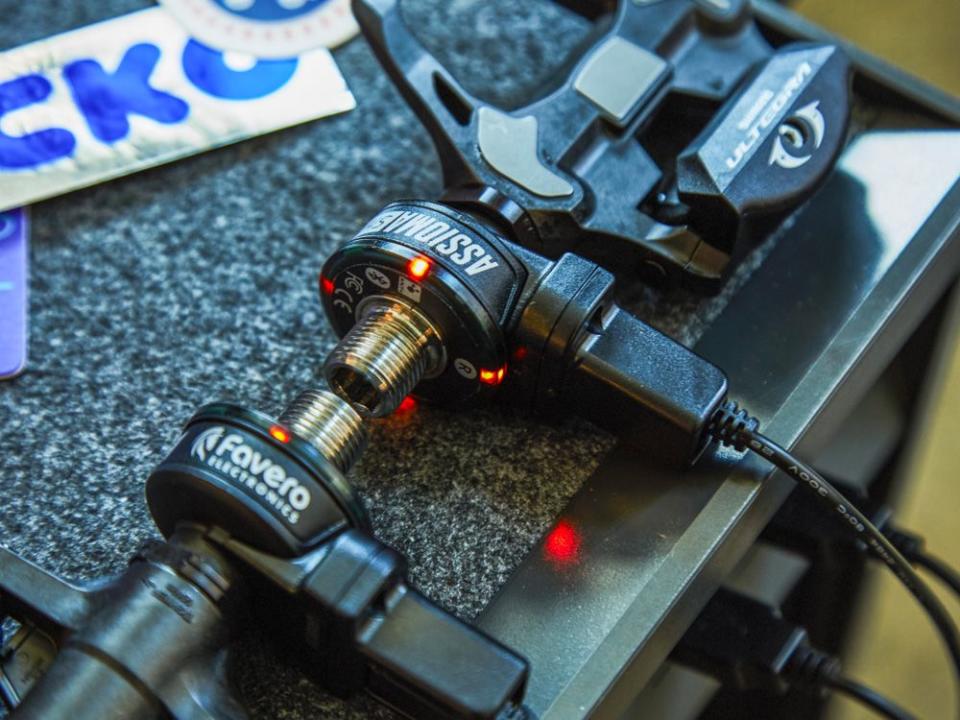
Rally Pedal-Based Power Meter
The Garmin Rally power meter line reliably provides enough data to make even the nerdiest of data nerds happy. It generates info on power, cadence, left/right balance, pedal smoothness, and how much time you spend standing and sitting in the saddle. They hold up well through all sorts of adverse conditions including mud, rain, and the occasional river, delivering clear data, even on rocky terrain.
The Rallys are particularly great for multi-bike users, as it’s really easy to swap the spindle between pedal bodies. If you own the RK200 power meter pedal set, for example, you can remove the spindles from the pedals (where the electronics are housed) and install them on another pair of pedal bodies using a Garmin conversion kit, which is just a set of pedals with slots for the spindles. It still takes me about 20 minutes to swap them in on another bike, but it’s easier than swapping the whole pedal. If you ride multiple bikes in lots of different road and off-road conditions, the Rallys can’t be beat.
Garmin gets extra credit for making different versions that work with the three most popular types of cycling cleats: Look Keo- (RK200), Shimano SPD-SL- (RS200), and Shimano SPD-style (XC200).
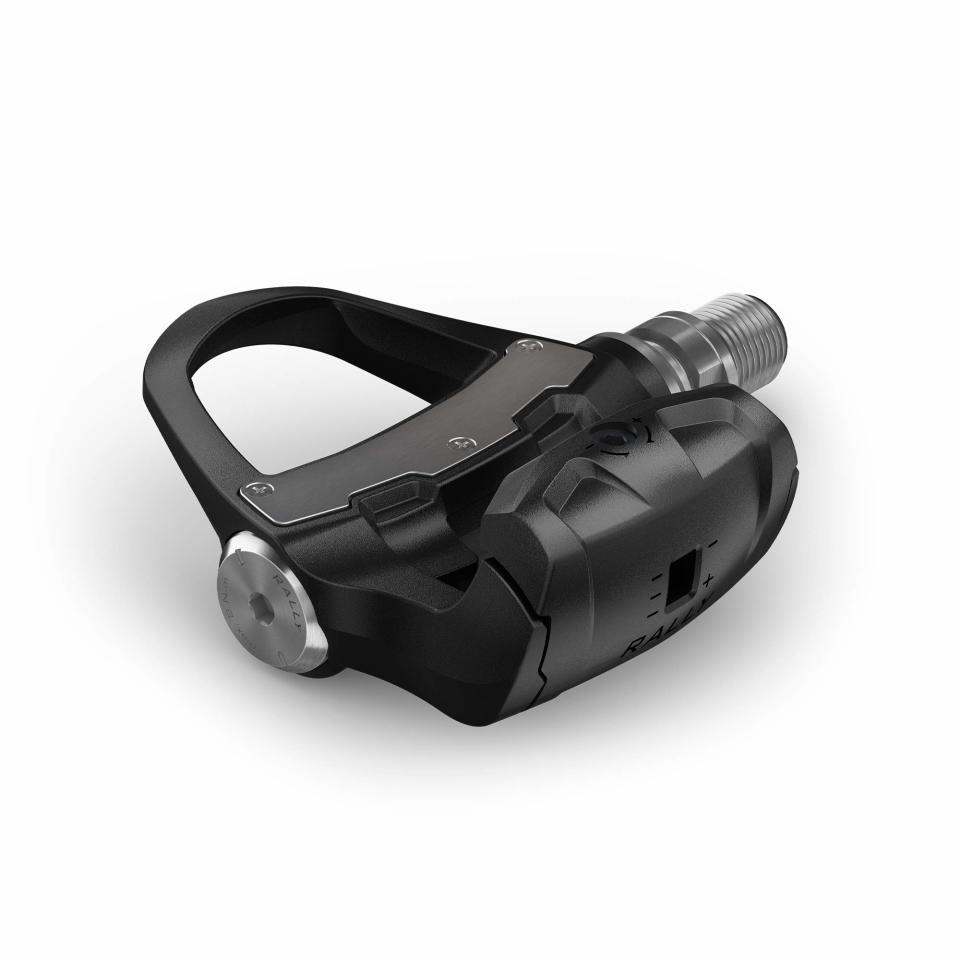
Rally Pedal-Based Power Meter
amazon.com
$1099.99
Precision 3.0 Power Meter
The most important thing any power meter can do–the one thing it needs to do–is deliver accurate data consistently, day after day. As a single-side power meter, the 4iiii Precision 3.0 cannot deliver all the fancy metrics as a dual-sided model, but you get a consistent basic power reading for a fraction of the cost of my other picks.
The Precision 3.0 comes installed on a Shimano crank arm of your choice. You pick the size and group set iteration (105, Ultegra, Dura-ace, GRX, XT, or XTR). Theoretically, if you have more than two bikes with Shimano cranks (and some basic bike mechanic knowledge) you can swap this power meter between them. Though it is restricted to Shimano cranksets, its thinner design ensures that it will pair with lots of different bike frames.
The standout feature, though, has to be its exceptional battery life, up to an estimated 800 hours–that’s by far the best on our list. Often, our budget/value picks are merely great for the price, but the 4iiii Precision 3.0 has much more going for it.
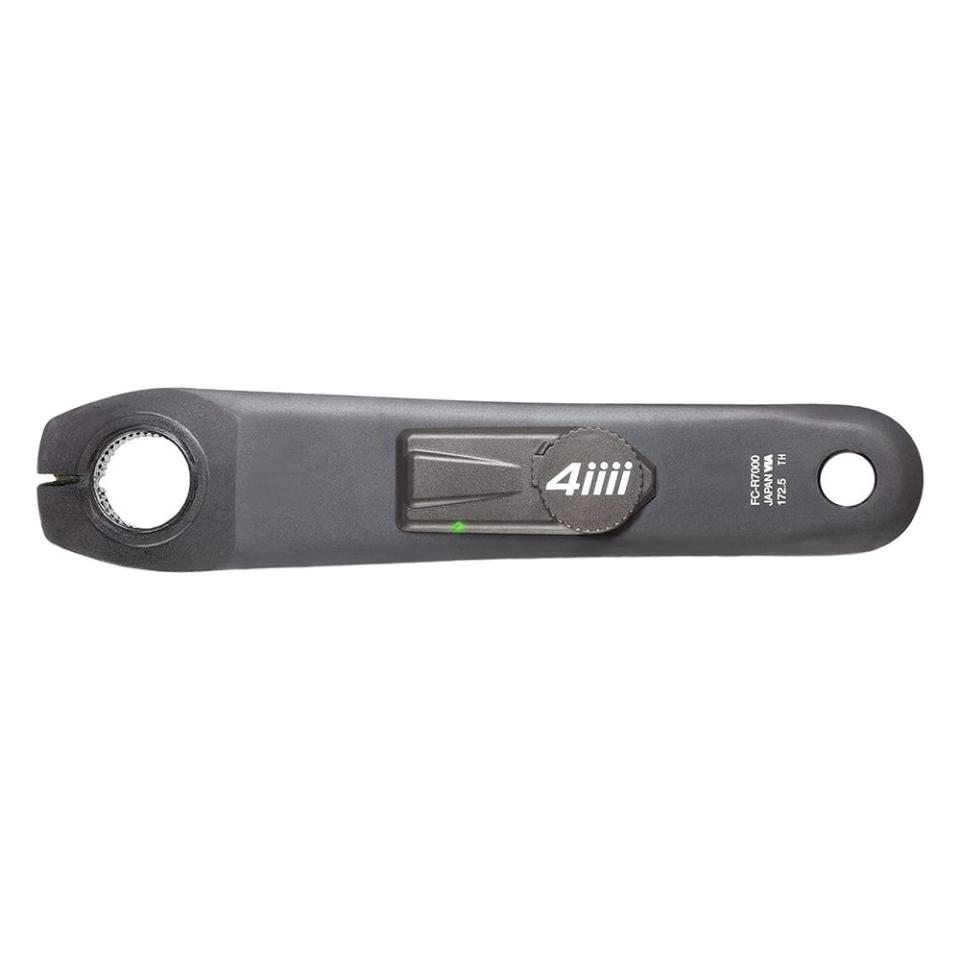
Precision 3.0 Power Meter
amazon.com
$334.99
Assioma Duo Road Pedals
Favero’s Assioma Duo pedals provide reliable and consistent data reporting for less than the Garmin Rally. They compute power, cadence, rider position, and actual instantaneous angular velocity, which indicates irregular pedaling up hills, sprints, or when using an oval chainring.
The rechargeable batteries mean the Favero Assioma Duos don’t have a potential weak point for water getting inside and causing damage. And, like the Garmin Rallys, they’re easy to swap between bikes. Favero even makes an intuitive mobile app.
So it’s all perfect except for one issue, which may or may not be a dealbreaker. The Assioma Duo pedals are compatible with Favero and Look Kéo cleats. They have a high stack height, similar to Look-style cleats, which can make walking in them difficult. If you, like me, prefer SPDs, it may not be worth it to switch. If you’re good with Favero’s cleat system, though, the Assioma Duo is a great choice that you can pick up for an excellent price.
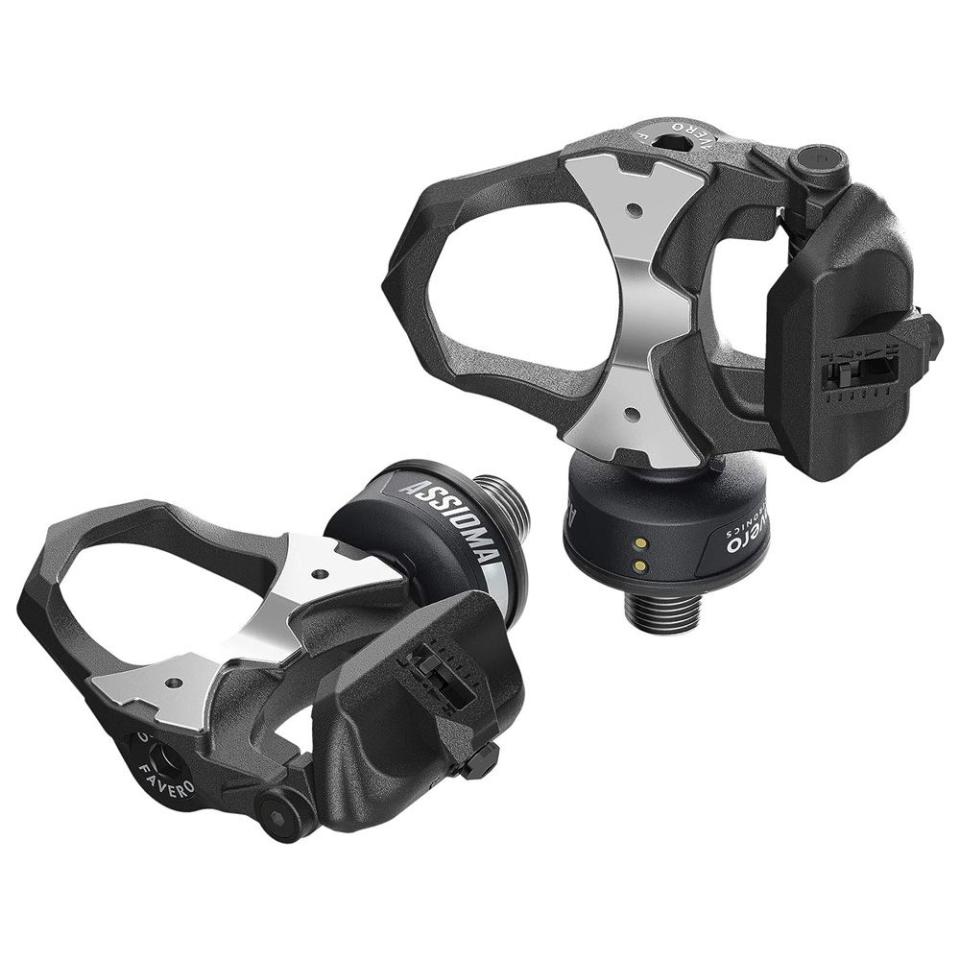
Assioma Duo Road Pedals
amazon.com
$759.00
X-Power MTB Power Meter Pedals
For off-road mountain bike riding or fully loaded touring, I like these power meter-equipped SPD pedals from SRM. The sensors and rechargeable battery fit neatly into a standard-sized pedal axle and pedal. They have a wide base and a string retention system for a secure and solid connection between my feet and the bike, even when rolling downhill over rocky and root laden terrain or climbing a seemingly endless mountain with loaded panniers.
Pedaling on them, they also feel pretty much exactly like my non-power meter SPD pedals. They’re so light that, if I forget to charge them or they run out of power, they simply stop transmitting data and continue to act – and feel – as good as a pair of pedals can, which means I forget about them and just keep moving forward.
Each pedal measures the force applied to it and cadence, which is then calculated into power and torque. Their measurements are accurate and reliable. It’s more than enough for me to monitor my left/right balance on my touring bike.
As a side note, I love that these are available in other colors besides basic black, though I understand that might not be a selling point for others. (I also use Serfas woven bar tape to make my bikes pop.) The red version of these pedals matches my Rohloff hub quite perfectly.
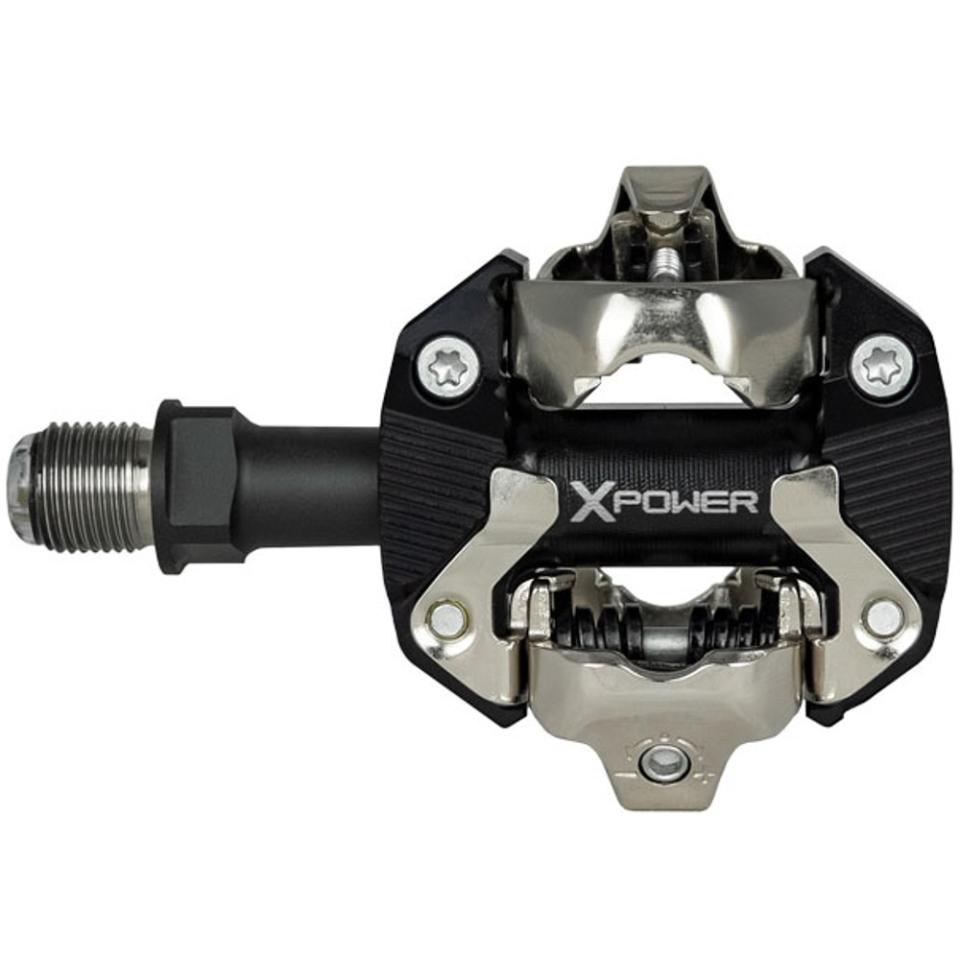
X-Power MTB Power Meter Pedals
powermetercity.com
$1499.00
Powrlink Zero Dual-Sided Power Pedals
The Wahoo Powrlink Zero is basically the only choice for a pedal-based power meter if you love Speedplay cleats. Luckily, that’s not a problem: The Powrlink Zero is an accurate and reliable power meter that looks and performs exceptionally.
Speedplay cleat systems are generally more expensive and complicated than SPD-SL and Look systems, but they offer tons of adjustability in both the cleats and the float system, as well as double-sided entry. (Speedplay pedals have no “right side up.” You can clip in on either side.)
The Powrlink Zero offers a notable 75 hours of battery life on charge, and plays nice with both Wahoo and Garmin cycling computers. I’ve been a fan of Wahoo’s bike computers for a long time and prefer them over Garmin’s, which aren’t exactly user-friendly.
They don’t provide the same advanced data as some of my other picks, though: Without torque effectiveness, pedal smoothness, and platform center offset, you won’t have the ability to really study and fine-tune your pedaling technique. While there are more versatile options out there, this is a great pick if you strongly prefer Speedplay cleats.
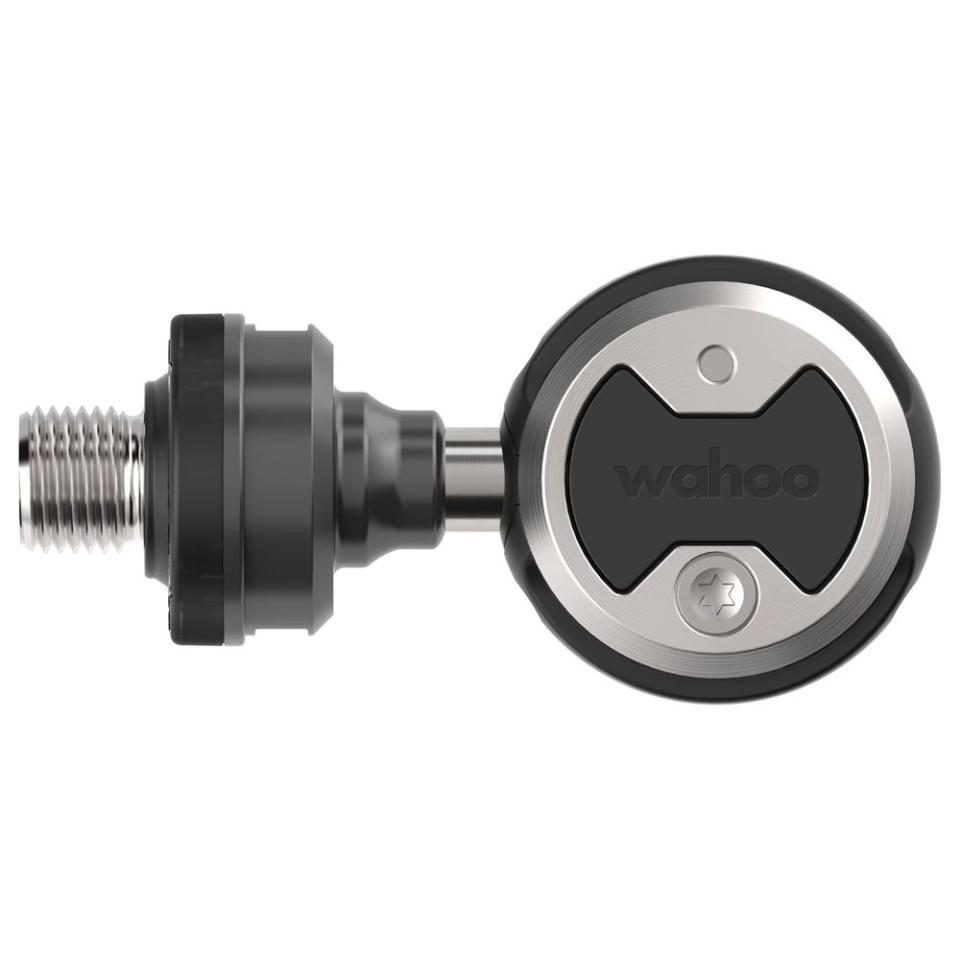
Powrlink Zero Dual-Sided Power Pedals
rei.com
$1000.00
DFour Dub Road Power Meter Crankset
Designed to work specifically with Shimano Dura-Ace groupsets, the Quarq DFour Dub is the best crank-based power meter I’ve used. Though its single-sided design introduces a slightly wider margin for error, it offers a suite of digital features that make it easier to use.
For example, its “10Ktempcomp” system compensates for temperature changes during your ride to measure your power more consistently and provides a right/left leg balance estimation based on total output. It also uses an algorithm called “MagicZero” to teach itself how to automatically calibrate for each ride.
You can get the DFour Dub in a number of different crank arm lengths, making it usable with a wide range of bikes. If you use Quarq Dub cranks, you can also purchase the spider on its own.
While it’s specifically designed to work with Dura-Ace 9100 chain rings (for aesthetic purposes), the power meter accepts all manner of Shimano chainrings, including 12-speed Shimano, Rotor and absolute Black oval rings. (It is only compatible with Quarq Dub cranks and a SRAM Dub bottom bracket, though.) In any case, all the electronic bits and parts are located safely in the spider, so the meter is quite well protected if you can’t keep your bike rubber-side down.
The Quarq D-Four Dub doesn’t provide the same advanced, in-depth data as our top picks, but it’s a versatile option that delivers more than you’d expect, and does so at an attractive price point.
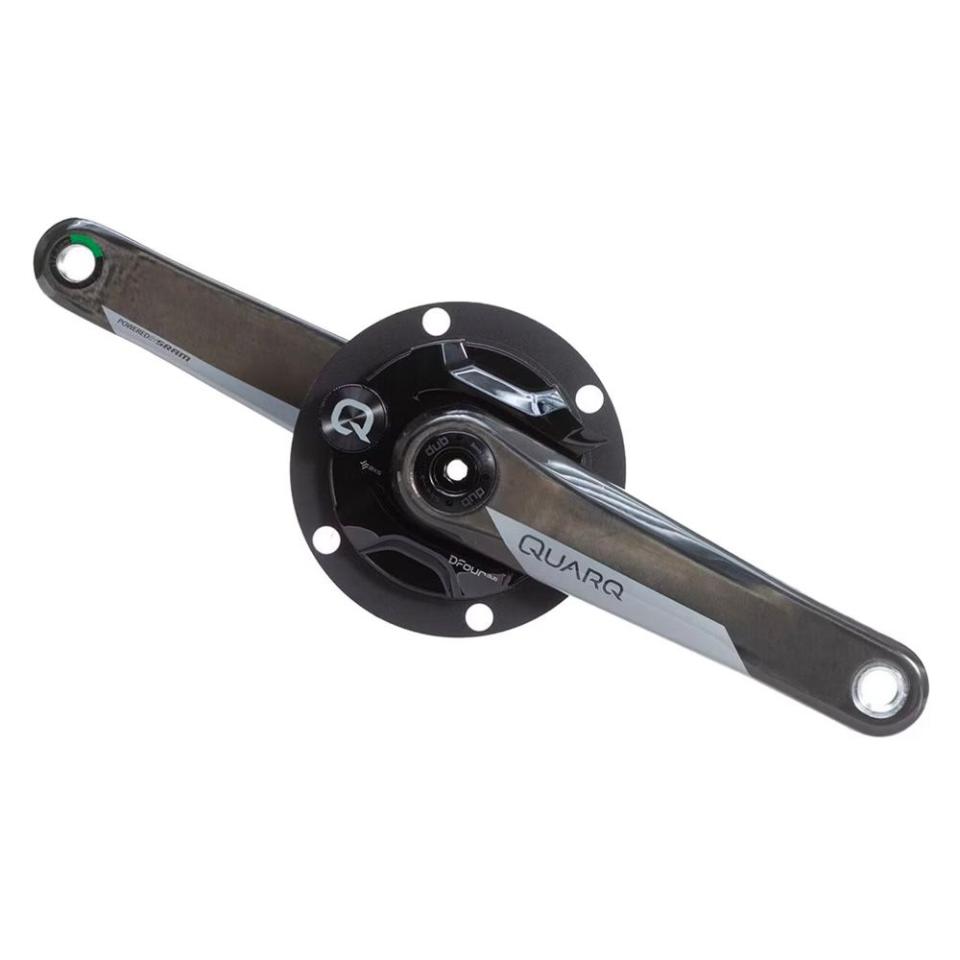
DFour Dub Road Power Meter Crankset
backcountry.com
$634.00
2Inpower SL
A true dual-sided crank based power meter, the Rotor 2Inpower SL has eight strain gauges: Four to measure the power coming from the spindle, and four that calculate power from the drive-side crank arm. Having that extra precision in a crankset-style design is a rare and attractive choice, and sets the table for it to attract advanced cyclists who really want in-depth power data.
Most crank- or spindle-based power meters place strain gauges in only one location. While they often estimate left/right balance and pedal smoothness, the dual gauges allow the 2Inpower SL to accurately record each leg.
More importantly, though, it records more data than most of our picks–up to 50 measurements per second. That extra precision leads to more accurate data. It also means that the 2InPower works well with the company’s oval chainrings, which require additional measurements to compensate for the uneven speeds of the rings.
On top of that, the 2Inpower boasts an impressive 250-hour battery life and takes 3 hours to charge fully. All of this means that the data you receive is more precise than that from other power meters with fewer sensors. For pro racers where every second–or even every millisecond–counts, this precision allows for more in depth analysis of performance.
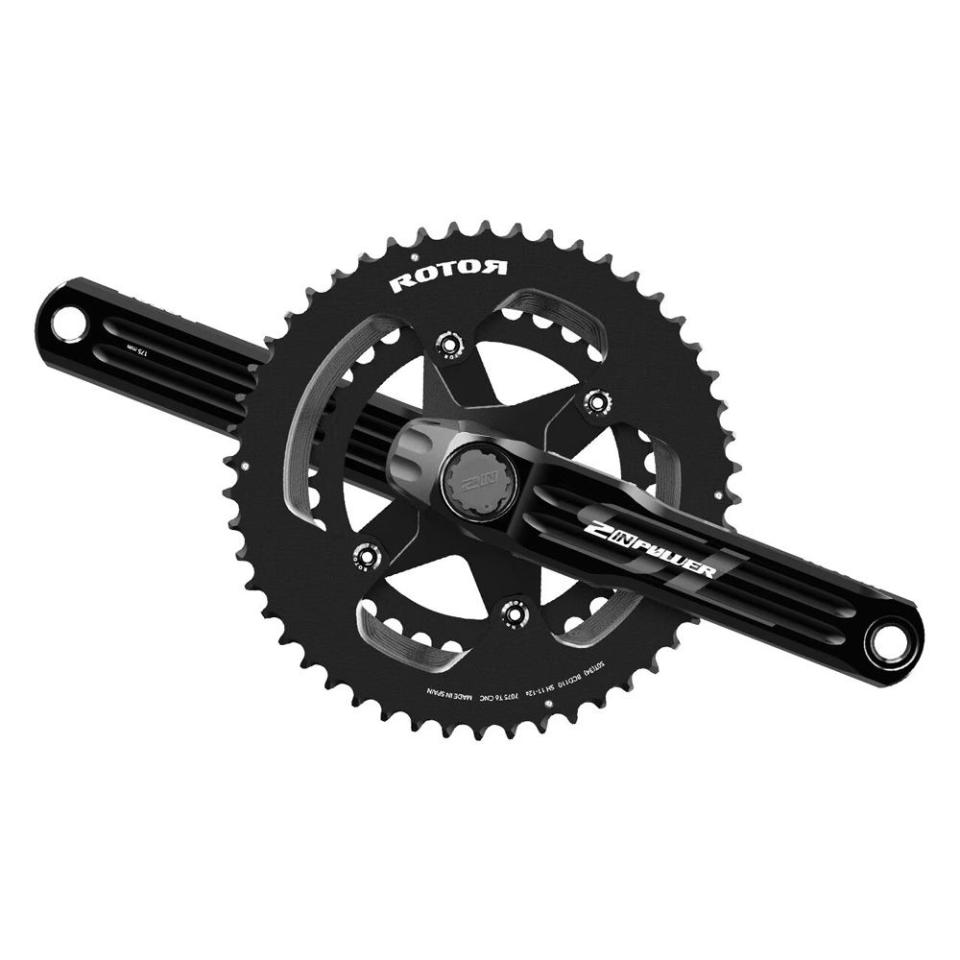
2Inpower SL
competitivecyclist.com
$1249.00
NG Road Power Meter
There are a dizzying number of bike configurations that are compatible with the Power2max NG power meter. After selecting a spider that is compatible with your cranks–Specialized, Rotor, Cannondale, Praxis, etc–you can choose to purchase the spider on its own, the spider and cranks together or, in some instances, the spider with chainrings and cranks. The tech doesn’t change, you’re just able to purchase it for use with the groupset of choice.
The configuration options include parts for some brands that are hard to source, like Campagnolo cranks and chainrings. Like all things Campy, the NG Campagnolo power meter with cranks is especially pricey.
Regardless of what you need, though, the NG delivers consistent, accurate data in a well-made package that is easy to use and very secure. It measures overall power, then uses an algorithm to calculate left/right balance and pedal smoothness. And the 150-hour battery life will let you embark on multi-day bikepacking trips without worrying about sourcing electricity, giving you even more time to obsess over your data from the day’s ride.
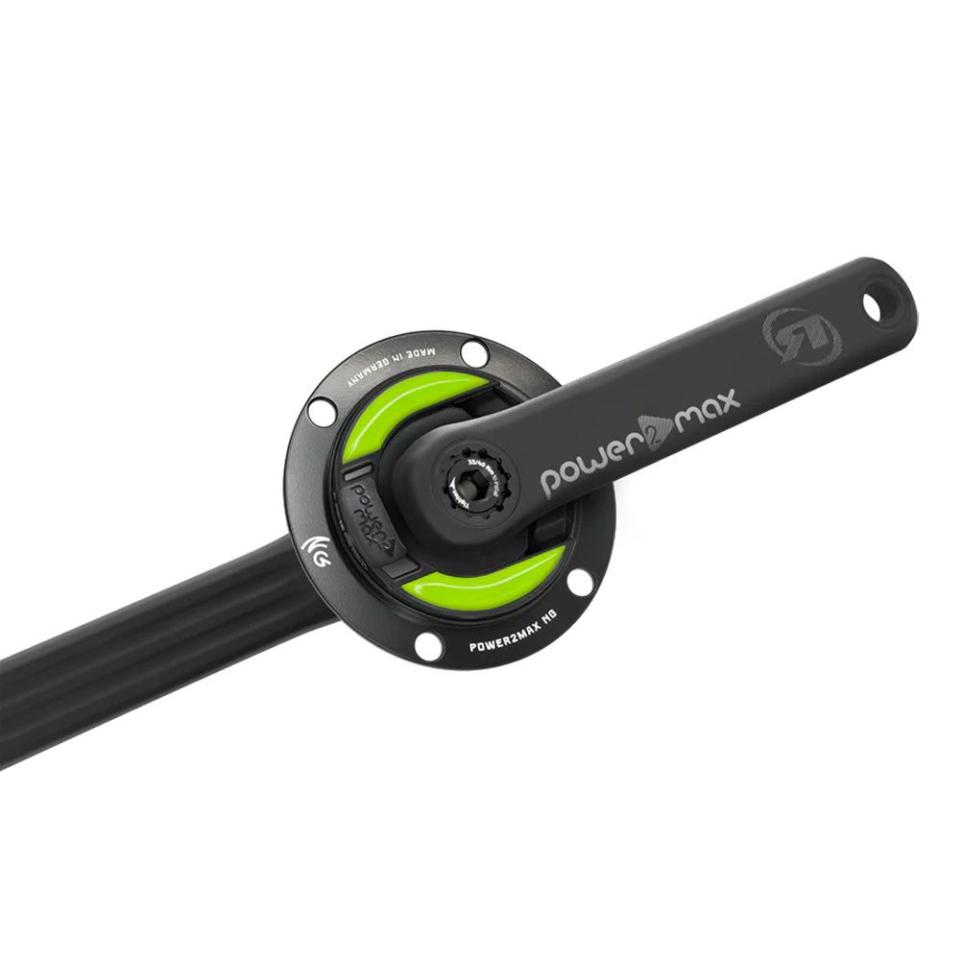
NG Road Power Meter
power2max.cc
$990.00
Q+A With Cycling Gear Expert Vanessa Nirode
How do I know when I need a power meter?
Technically, most riders don’t need a power meter. It’s a useful tool for monitoring progress if you are training for a race or any event where you want to perform as well as you can. I also personally recommend that riders who are recovering from an injury should use a power meter to monitor asymmetry in their pedal strokes.
How do I use the data I get from a power meter?
There are many online sources that can help you take the metrics you record with a power meter and use them to focus your training. Bicycling’s guides to cycling zones and FTP tests are great places to start. There are also training apps and logs that can help you make tracking, interpreting, and using your data easier–as well as satisfying your inner (or outer) math and science geek.
Do I need a cadence sensor if I have a power meter?
Power meters have an accelerometer, so you don’t need a separate device to measure cadence.
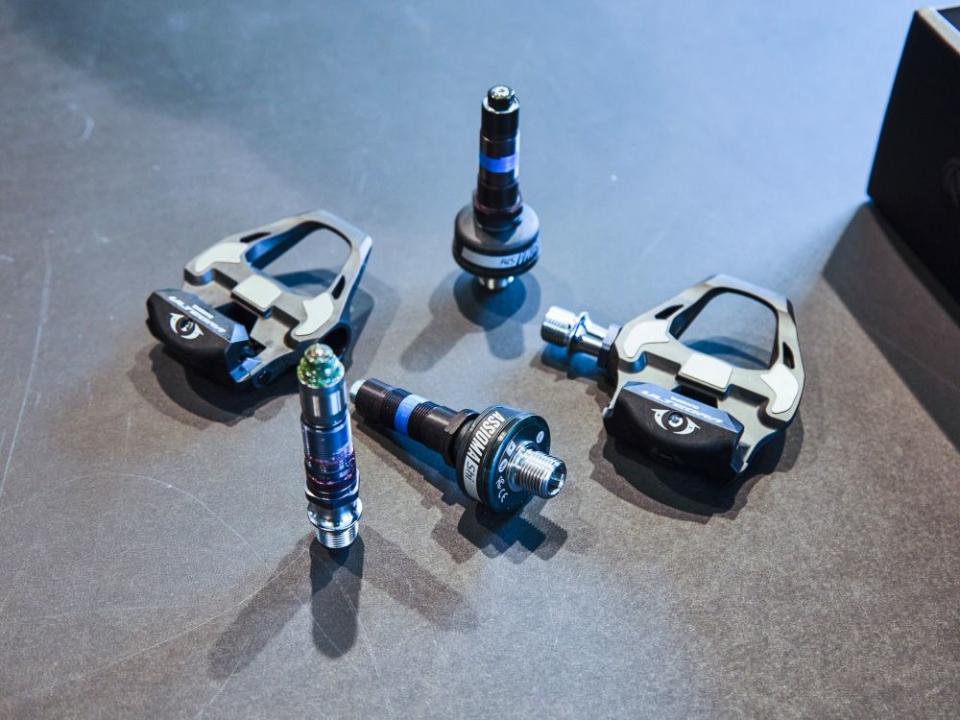
You Might Also Like

